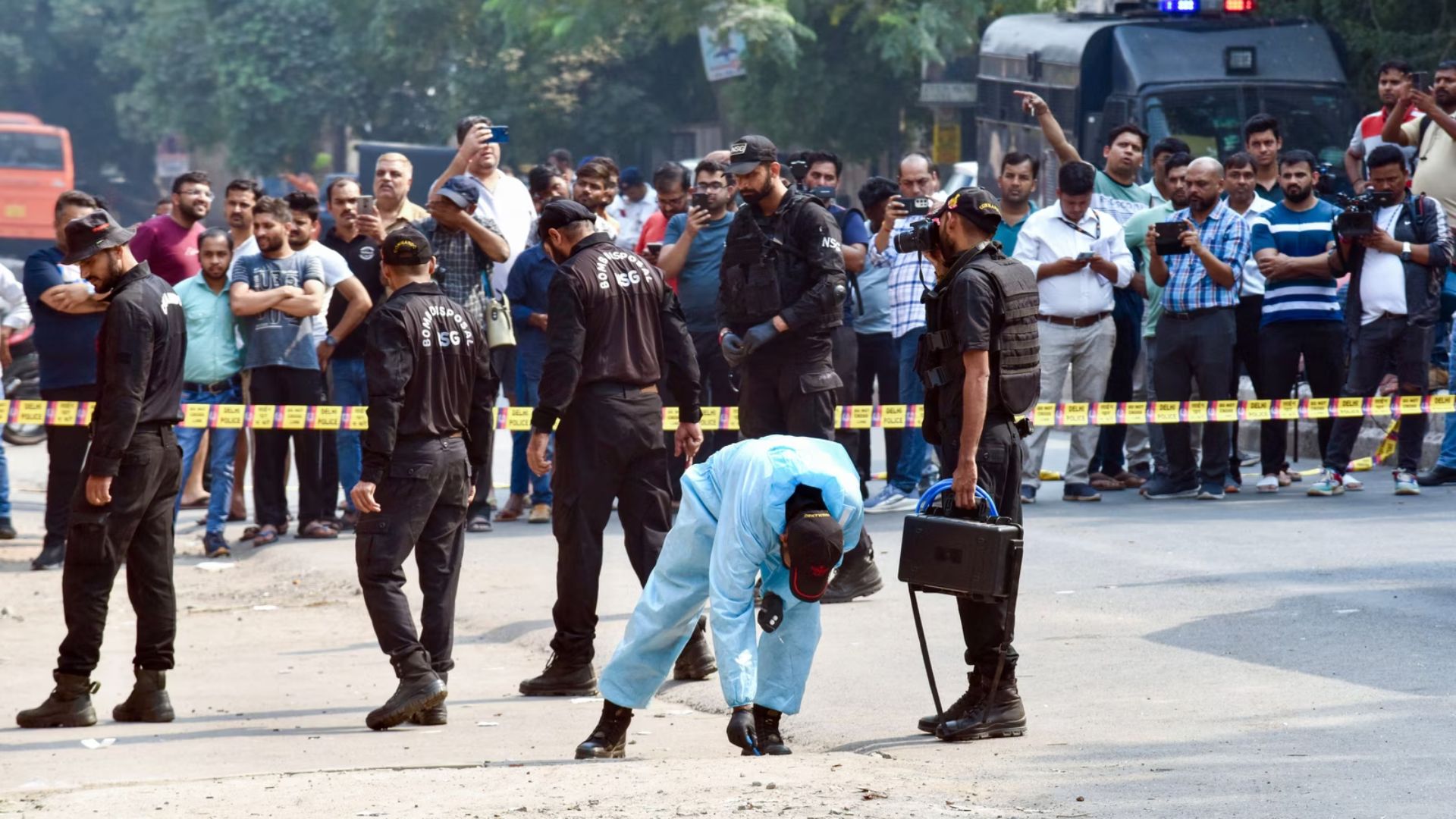As investigations into the recent Delhi blast continue, new details have emerged, with authorities now suspecting possible Khalistani links. The explosion, which occurred in the Prashant Vihar area near a CRPF school, caused significant damage, and key information about the suspect’s identity and the nature of the explosives has been revealed.
Suspicious Man Spotted Before the Blast
According to the investigation, a man wearing a white t-shirt was seen acting suspiciously near the blast site the night before the explosion. Authorities are probing his involvement, as his activity raised red flags shortly before the incident.
Further details from the Delhi Police confirmed that the explosive device was placed in a half to one-foot-deep pit. It was wrapped in a polythene bag and covered with garbage to avoid detection. Sources suggest that the blast was caused by a crude bomb, with traces of low explosives found near the site.
During the investigation, a white powdery substance suspected to be ammonium phosphate—a common component in homemade bombs—was discovered at the scene. Forensic analysis is underway to confirm the exact nature of the materials. Additionally, wires and a battery were found, raising questions about whether they were connected to the explosion.
The FIR lodged in connection with the case offers vital details. It states that the explosion caused damage to the boundary wall of the CRPF school and shattered the window panes and signboards of nearby shops. The area was cordoned off, and senior officers and forensic teams were immediately dispatched to the scene.
As the investigation continues, the case has been registered under Section 326(g) of the BNS, Section 3 of the Explosive Substances Act, and Section 4 of the Prevention of Damage to Public Property Act.







